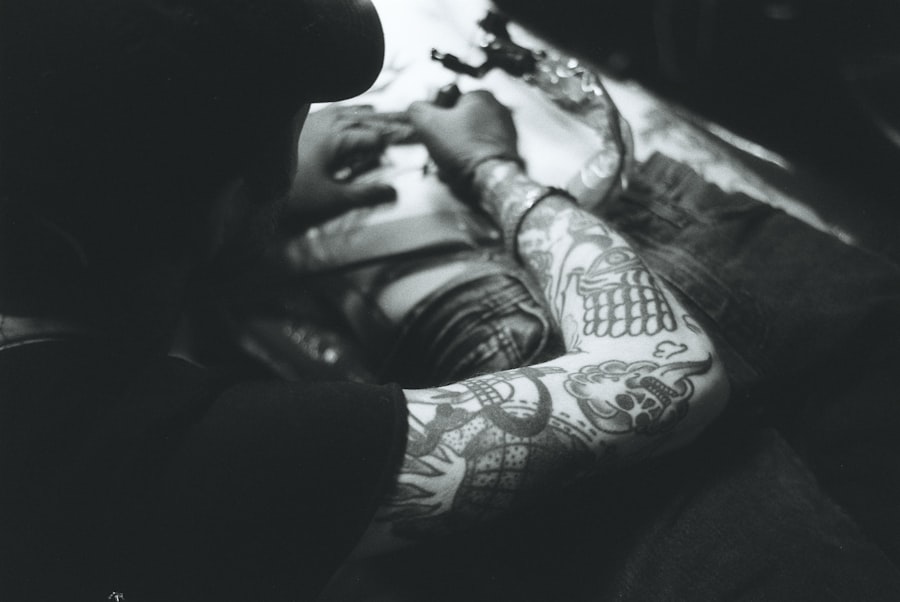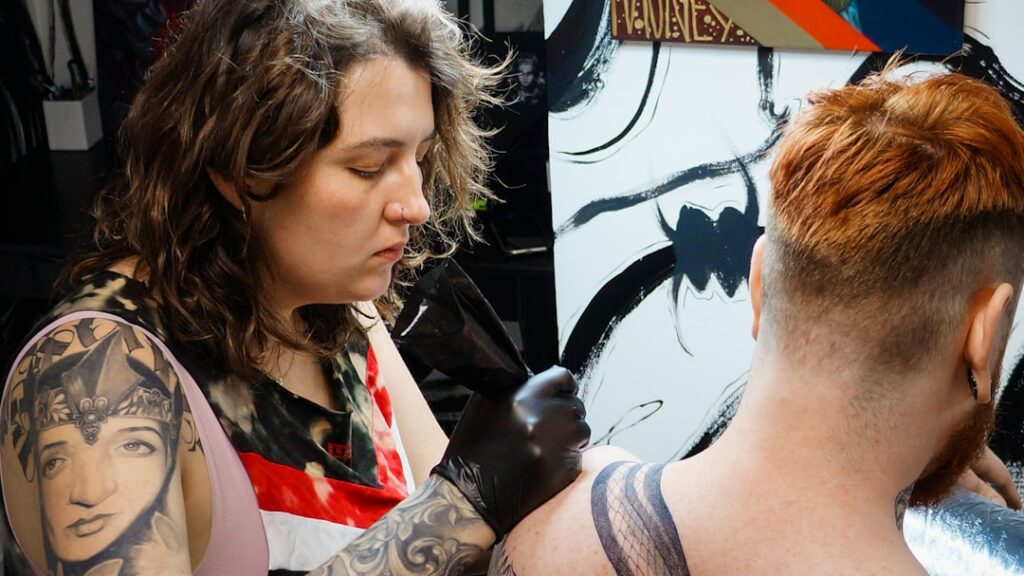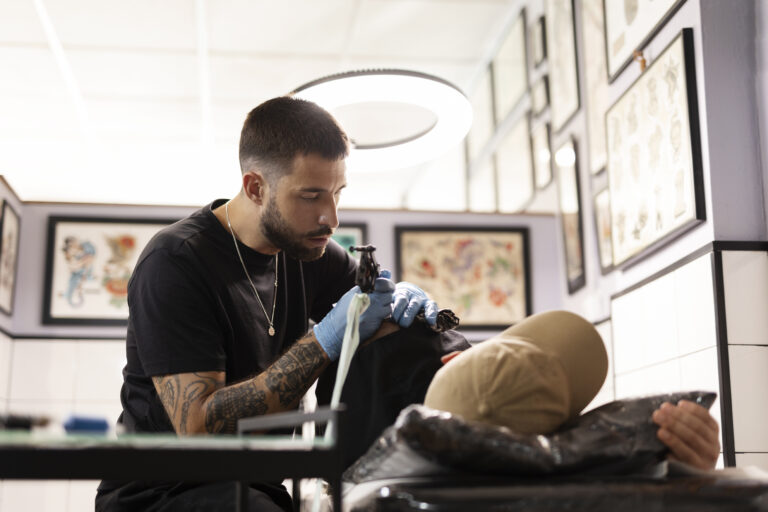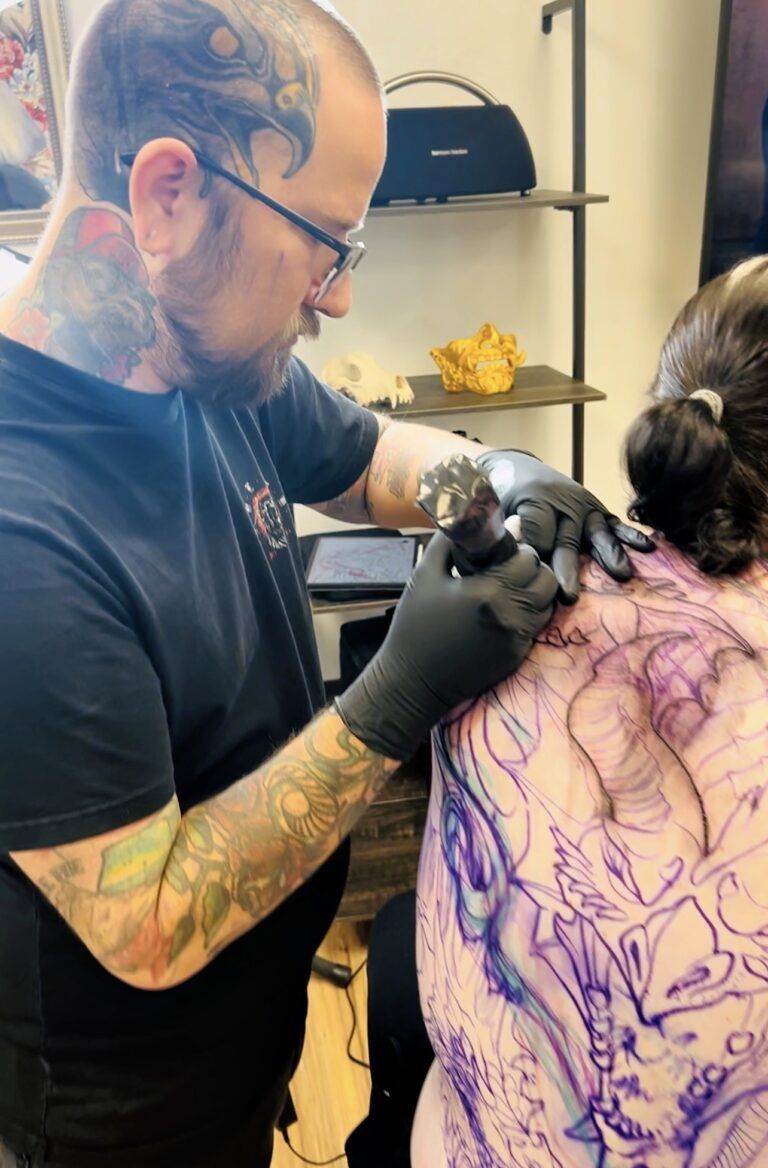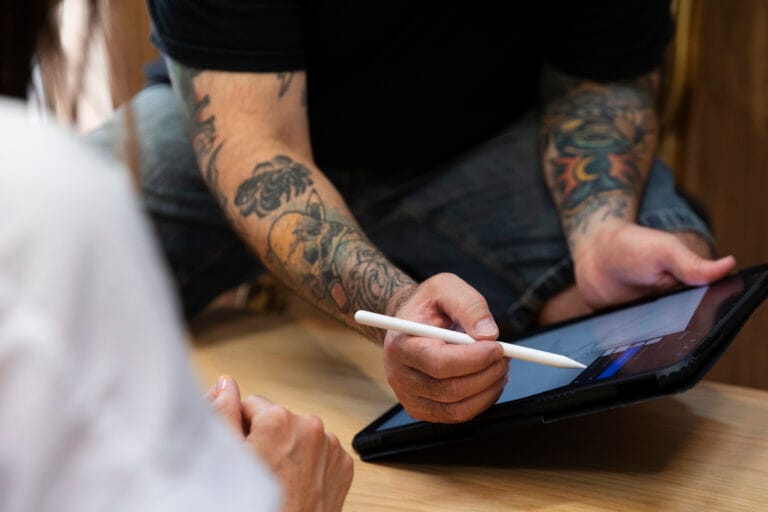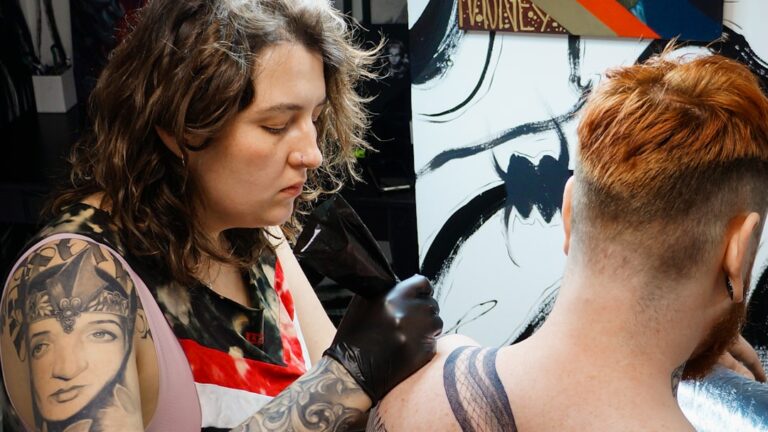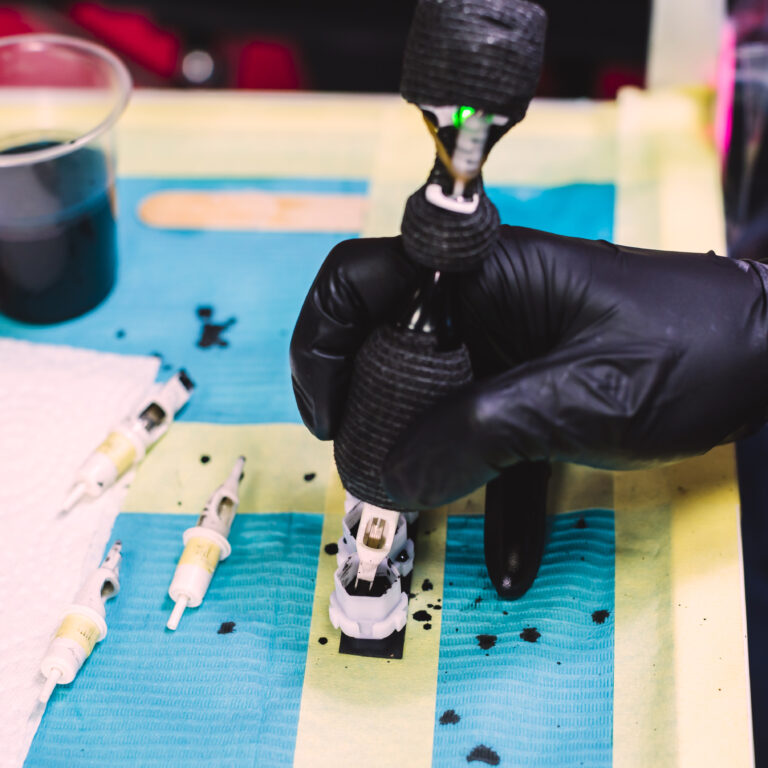Faded tattoos are a common concern for many individuals who have chosen to express themselves through body art. Over time, tattoos can lose their vibrancy and clarity due to various factors, including sun exposure, skin aging, and the natural healing process of the body. The ink used in tattoos is not permanent in the sense that it will always remain as vivid as it was on the day of application.
Instead, it can gradually fade, leading to a less defined appearance. This fading can be particularly noticeable in linework tattoos, where the precision of the lines is essential to the overall design. The fading of tattoos can evoke a range of emotions, from disappointment to a desire for rejuvenation.
For some, a faded tattoo may serve as a reminder of a past experience or a significant moment in their lives. However, for others, it can be frustrating to see a piece of art that once held great meaning become less distinct over time. Understanding the reasons behind tattoo fading is crucial for anyone considering refreshing their ink.
Factors such as skin type, lifestyle choices, and even the quality of the ink used during the initial tattooing process can all contribute to how well a tattoo holds up over time.
Key Takeaways
- Faded tattoos are a common occurrence due to factors such as sun exposure, aging, and poor aftercare.
- Signs that linework needs refreshing include blurred edges, loss of color intensity, and overall dull appearance.
- Factors to consider before refreshing linework include the age of the tattoo, skin type, and potential allergic reactions to new ink.
- Consultation with a professional tattoo artist is crucial to assess the condition of the tattoo and discuss the best approach for refreshing linework.
- Techniques for refreshing faded linework may include touch-ups, color blending, and adding additional linework for definition.
- Aftercare for refreshed linework involves keeping the area clean, moisturized, and protected from sun exposure to ensure proper healing.
- Potential risks and complications of refreshing faded tattoos include infection, allergic reactions, and uneven color distribution.
- In conclusion, refreshing faded tattoos can restore their vibrancy and definition, but it’s important to carefully consider the process and consult with a professional to minimize risks.
Signs that Linework Needs Refreshing
Recognizing when linework needs refreshing is essential for maintaining the integrity of a tattoo. One of the most apparent signs is the loss of sharpness in the lines. When a tattoo is first applied, the lines are crisp and well-defined.
However, as time passes, these lines may begin to blur or lose their distinct edges. If you find yourself squinting to see the details of your tattoo or if the lines appear more like smudges than clean strokes, it may be time to consider a refresh. Another indicator that linework requires attention is color fading.
While some tattoos are designed to be more muted or subtle, if your tattoo was originally vibrant and has since dulled significantly, it may not only look less appealing but also fail to convey the intended message or emotion. Additionally, if you notice any unevenness in the ink distribution or if certain areas appear lighter than others, these are clear signs that your tattoo could benefit from a touch-up. Being aware of these signs can help you take proactive steps to restore your tattoo’s original beauty.
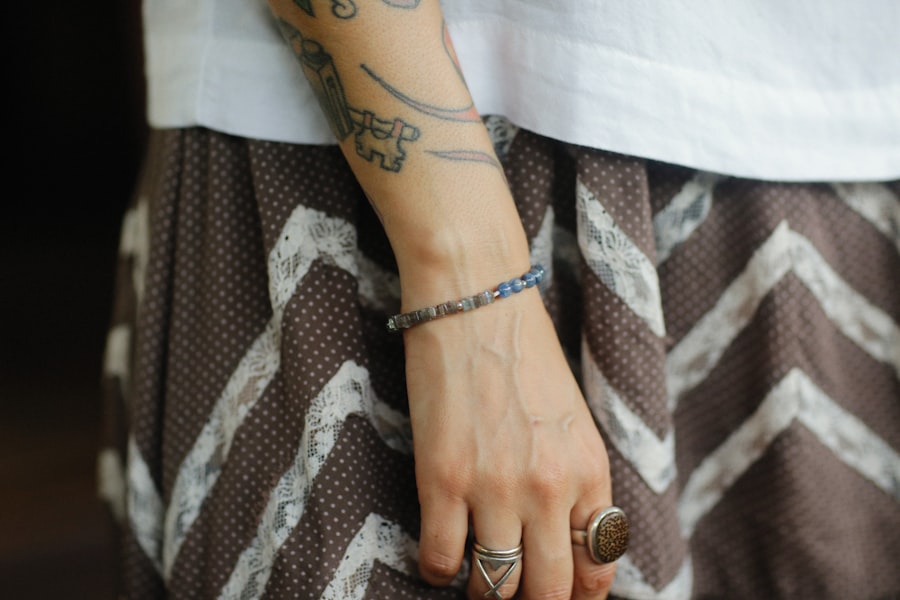
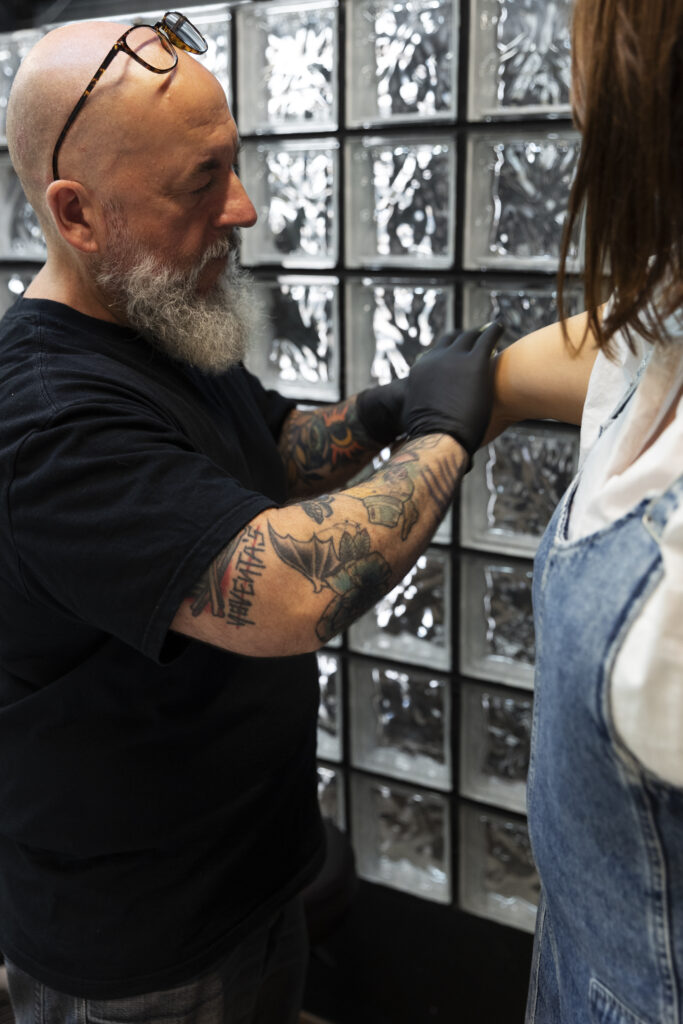
Factors to Consider Before Refreshing Linework
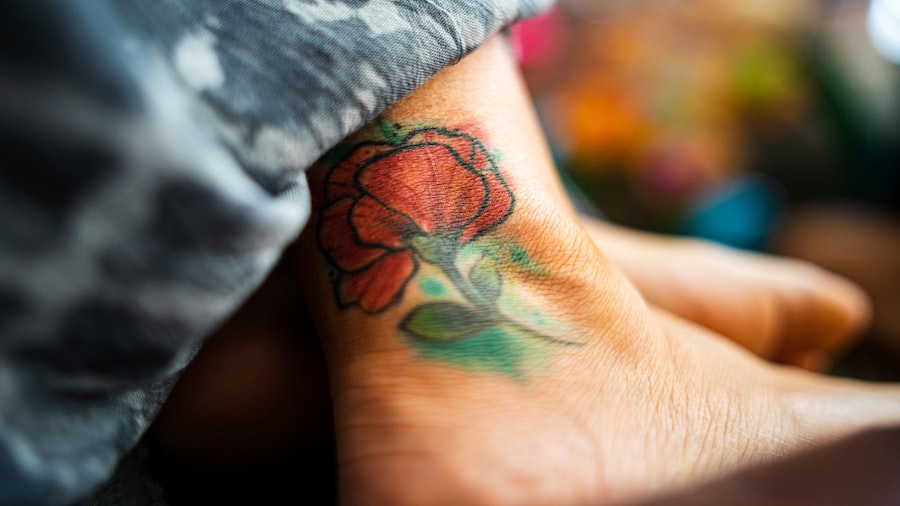
Before deciding to refresh faded linework, several factors should be taken into account. First and foremost is the condition of your skin. Skin elasticity and overall health play a significant role in how well a tattoo can be refreshed.
If your skin has undergone significant changes due to aging or other factors, it may affect how the new ink adheres and heals. Consulting with a professional tattoo artist can provide valuable insights into whether your skin is ready for a touch-up. Another important consideration is the original tattoo’s design and placement.
Some designs may lend themselves better to refreshing than others. For instance, intricate designs with fine details may require more careful attention during the refresh process compared to simpler designs. Additionally, the location of the tattoo on your body can impact how well it holds up over time.
Areas that experience more friction or sun exposure may fade more quickly than those that are less exposed. Understanding these factors can help you make an informed decision about refreshing your linework.

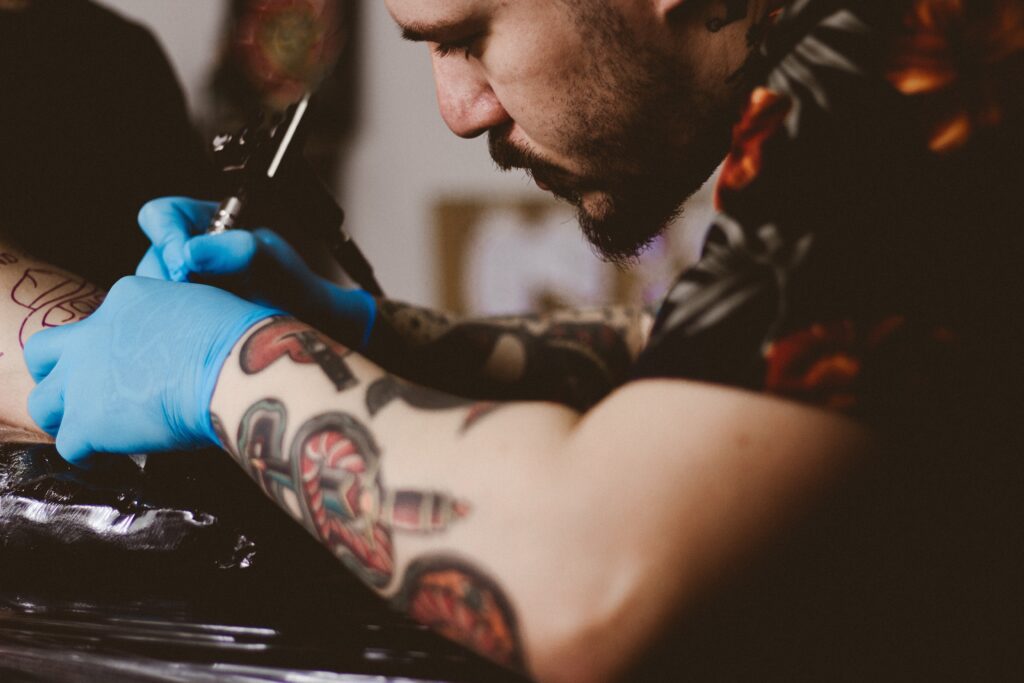
Consultation with a Professional Tattoo Artist
Consulting with a professional tattoo artist is an essential step in the process of refreshing faded linework. A skilled artist can assess the condition of your tattoo and provide personalized recommendations based on their expertise. During this consultation, it’s important to communicate your goals clearly—whether you want to restore the original vibrancy or make adjustments to the design itself.
A professional artist will take the time to understand your vision and offer insights on what is feasible. Moreover, an experienced tattoo artist will evaluate your skin type and any changes that may have occurred since your initial tattoo application. They can also discuss various techniques for refreshing linework and help you choose the best approach based on your specific needs.
This collaborative process ensures that you are well-informed and comfortable with the decisions being made regarding your tattoo refresh.
Techniques for Refreshing Faded Linework
There are several techniques available for refreshing faded linework, each with its own advantages and considerations. One common method is to simply go over the existing lines with fresh ink. This technique involves carefully retracing the original design to restore its sharpness and clarity.
A skilled artist will use precision to ensure that the new ink blends seamlessly with the old, creating a cohesive look that revitalizes the tattoo without altering its original essence. Another technique involves adding shading or color enhancements to complement the existing linework. This approach can breathe new life into a faded tattoo by introducing depth and dimension that may have been lost over time.
By incorporating additional elements into the design, you can create a more dynamic piece that reflects your evolving style while still honoring the original artwork. Ultimately, the choice of technique will depend on your personal preferences and the condition of your tattoo.
Aftercare for Refreshed Linework
Proper aftercare is crucial following any tattoo refresh procedure to ensure optimal healing and longevity of the new ink. After your session at Opal Lotus in Houston, your artist will likely provide specific aftercare instructions tailored to your individual needs. Generally, it’s important to keep the area clean and moisturized while avoiding direct sunlight and excessive moisture for at least a few weeks post-procedure.
Using a gentle, fragrance-free soap to cleanse the area is recommended, followed by applying a thin layer of healing ointment or moisturizer as advised by your artist. Avoiding tight clothing over the tattooed area can also help prevent irritation during the healing process. Adhering to these aftercare guidelines will not only promote healing but also help maintain the vibrancy of your refreshed linework for years to come.
Potential Risks and Complications
While refreshing faded linework can yield beautiful results, it’s essential to be aware of potential risks and complications associated with the process. One common concern is allergic reactions to new ink or aftercare products used during healing. Some individuals may develop sensitivities that were not present during their initial tattoo application, leading to redness, swelling, or itching in the treated area.
Infection is another risk that can arise if proper aftercare is not followed diligently. Open skin from tattooing requires careful attention to hygiene; failure to keep the area clean can lead to complications that may affect both healing and appearance. Additionally, if an inexperienced artist performs the refresh, there’s a risk of uneven application or further fading down the line.
Therefore, choosing a reputable studio like Opal Lotus in Houston is crucial for minimizing these risks.
Final Thoughts on Refreshing Faded Tattoos
Refreshing faded tattoos is an opportunity for individuals to breathe new life into their body art while preserving its original significance. By understanding the signs that indicate a need for refreshment and considering various factors before proceeding, individuals can make informed decisions about their tattoos’ future. Consulting with a professional artist ensures that you receive personalized guidance tailored to your unique situation.
Ultimately, whether you choose to simply retrace existing lines or enhance your design with new elements, refreshing faded linework can be a rewarding experience that revitalizes not just your tattoo but also your connection to it. With proper aftercare and attention to potential risks, you can enjoy a beautifully restored piece of art that continues to tell your story for years to come.
FAQs
What is linework in a tattoo?
Linework in a tattoo refers to the outline or the basic structure of the design. It is the initial framework that gives shape and form to the tattoo design.
Why do tattoos fade over time?
Tattoos fade over time due to a variety of factors such as exposure to sunlight, aging of the skin, and the natural healing process of the body. The ink particles in the skin can also break down and disperse over time, leading to a faded appearance.
When should linework in a tattoo be refreshed?
Linework in a tattoo should be refreshed when it starts to appear blurry, uneven, or faded. This can happen over time due to the natural aging process of the skin and the breakdown of ink particles. Refreshing the linework can help restore the sharpness and clarity of the tattoo design.
How often should linework in a tattoo be refreshed?
The frequency of refreshing linework in a tattoo can vary depending on factors such as the quality of the original tattoo, the location of the tattoo on the body, and the individual’s skin type. In general, linework may need to be refreshed every 5-10 years to maintain its sharpness and clarity.
What are the risks of refreshing linework in a tattoo?
Refreshing linework in a tattoo carries some risks, including potential damage to the skin, allergic reactions to the ink, and the possibility of infection. It is important to choose a reputable and experienced tattoo artist and follow proper aftercare instructions to minimize these risks.



